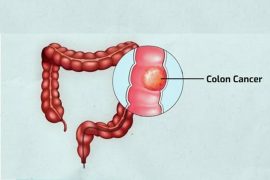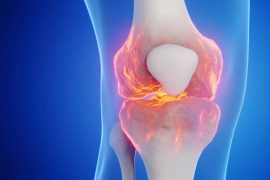The nose, despite being one of the most prominent facial features, often goes unnoticed in our daily vision due to the brain’s ability to filter out familiar elements. However, this seemingly overlooked feature plays a critical role in health diagnostics. According to a recent study led by Dan Baumgardt at the University of Bristol, the nose can be an essential indicator of various health issues, both related to external skin conditions and internal diseases. This makes it an important focus in medical assessments for early detection of potential health problems.
Acne Rosacea and Rhinophyma
Acne Rosacea is a chronic inflammatory skin condition that primarily affects the face, especially the nose and cheeks. It is characterized by persistent redness, visible blood vessels, and sometimes small, red, pus-filled bumps. Over time, if left untreated, acne rosacea can lead to a more severe condition known as rhinophyma. Rhinophyma involves the thickening and enlargement of the skin on the nose, resulting in significant changes in its appearance. This condition can cause the nose to develop a bulbous, distorted shape, often requiring medical intervention for treatment.
Wolf’s Nose (Sarcoidosis and Lupus Pernio)
Wolf’s Nose is a colloquial term for a manifestation of Sarcoidosis, an inflammatory disease that can affect multiple organs in the body, including the lungs, lymph nodes, and skin. When sarcoidosis affects the nose, it is specifically referred to as lupus pernio. This condition presents as bluish or purplish patches on the nose, ears, fingers, and toes. The discoloration and lesions caused by lupus pernio are a distinctive sign of sarcoidosis and can serve as an important diagnostic clue for physicians. Sarcoidosis can lead to various complications if not diagnosed and managed early.
Trigeminal Trophic Syndrome
Trigeminal Trophic Syndrome is a rare neurological condition that arises from damage to the trigeminal nerve, which is responsible for sensation in the face. This nerve damage can affect the skin surrounding the nostrils, leading to a range of sensory disturbances. Patients may experience symptoms such as numbness, loss of sensation (desensitization), or prickling sensations in the affected area. Repeated injury or irritation can cause ulcers to develop around the nostrils, further complicating the condition. It is important to differentiate this syndrome from skin picking disorder, a psychological condition where individuals are compelled to pick at their skin, as the underlying causes and treatments differ significantly.
The nose serves as more than just a central feature of the face; it is a key player in diagnosing various health conditions. From dermatological issues like acne rosacea and rhinophyma to systemic diseases like sarcoidosis and neurological conditions like trigeminal trophic syndrome, the nose provides valuable insights into a person’s overall health. Recognizing and understanding these signs can lead to earlier diagnosis and more effective treatment, underscoring the nose’s critical role in health diagnostics.
Disclaimer:
The information contained in this article is for educational and informational purposes only and is not intended as a health advice. We would ask you to consult a qualified professional or medical expert to gain additional knowledge before you choose to consume any product or perform any exercise.







